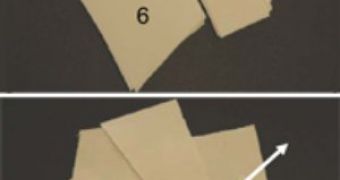Graphene may very well be the material of the future and is currently of high scientific interest due to its unusual electronic properties. The single planar sheet of carbon atoms - pencil tips are made of multiple graphene sheets - is now the base of a revolutionary new material that will find many practical applications in the near future.
What material has a tensile strength and a stiffness greater that carbon? None. What is lighter yet stronger than carbon fiber? How about a mixture of graphene oxide particles in water? You may not believe it, but this material is actually tougher than steel and as flexible as carbon fiber and can be made much more cheaply.
Called Element 12, by researchers from Northwestern University in Evanston, Illinois, who invented it, this surprising material could find many uses, incorporated in aircraft fuselages, military vehicles and even racing bicycles and tennis rackets.
It is made of assembled particles of graphene oxide, a form of graphite and a cousin of diamonds that arrange themselves into very thin sheets, after they have been dispersed in specially treated water.
The resulting mixture is drawn through a filter membrane and the water causes the particles to bind into a paper-like layer on the filter's surface, producing an ultrastrong sheet, tougher than sheet and flexible as paper.
"We actually don't know all of the details of how the layering takes place," says physical chemist and co-author Rod Ruoff. This graphene paper has another advantage, since it can be fabricated to any size, making it a prime candidate for a new generation of superstrong composite materials, as Ruoff says.
However, there's one little problem. Just as Kryptonite could hurt Superman, even though it came from his home planet, water does the same thing to the super paper. After initially giving it the huge strength, it also destroys it if the sheets are again submerged in it.
Scientists are working to solve this problem by finding other molecules that can replace water in the fabrication process, a research estimated to take probably a decade or so.

 14 DAY TRIAL //
14 DAY TRIAL //